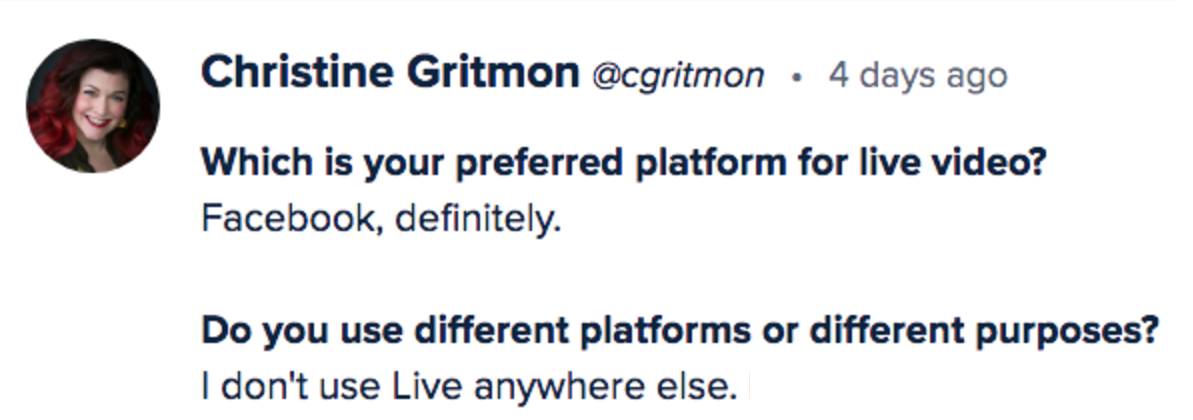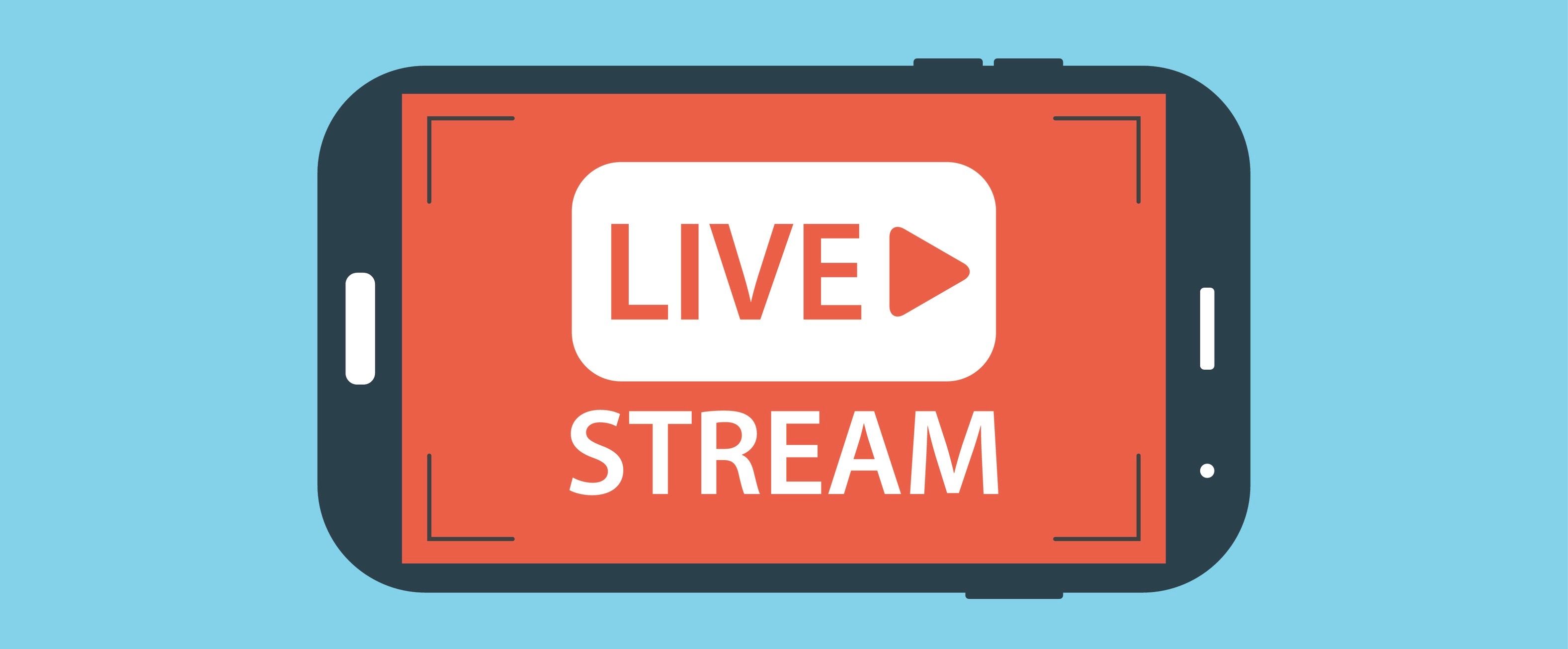What else can we debate?” This time, the contenders were some of the major live video platforms out there: Facebook, Instagram, YouTube, and Snapchat. Why do you prefer this/these platform(s)? Why Use Facebook Live? With so many people already using Facebook, users often come across content from creators that they don’t already follow because it’s recommended by the platform’s algorithm, or one of their friends engaged with it or shared it, which shows up as activity on their feeds. Why Use Instagram? When it comes to streaming live video on mobile, Fresh Egg’s Social Media Manager Mark Longhurst says that Instagram Live is his go-to platform: Here’s where discoverability comes into play. These criteria make Instagram an ideal platform for live videos that are update-like in nature -- a way to say “hello” to viewers and show them what your brand and its people are up to. Instagram = Good for discoverability, with spontaneous, shorter-form live videos. YouTube = Good for marketers with a pre-established audience on this platform already, who can upload pre-recorded videos on their channels to tease live broadcasts. Snapchat = Good for sharing among friends -- not new audiences.

Do you like to argue?
I do. I come from a long line of debaters, negotiators, and general question-askers — and now, it turns out, sparking these discussions has become part of my job.
That often manifests itself during our team’s lively Slack discussions
around everything between what’s for lunch and the latest marketing news — the latter of which often includes a healthy amount of debate around which tools and channels we prefer to use, both as marketers and consumers of technology.
So when my colleague, Marketing Blog Staff Writer Sophia Bernazzani, recently covered an entire discussion around which is better — Snapchat, or Instagram — I thought, “That’s a great idea. What else can we debate?”
This time, the contenders were some of the major live video platforms out there: Facebook, Instagram, YouTube, and Snapchat. I opened up the discussion on Slack …

inbound.org community members.
We asked marketers the following:
- Which is your preferred platform for live video?
- Do you use different platforms for different purposes?
- Why do you prefer this/these platform(s)?
- Do you particularly dislike the non-preferred platforms, and if so, why?
And now, we’re sharing some of marketers’ biggest reasons why they prefer each platform — read on for some of the highlights of the debate below.
Why Use Facebook Live?
1) There’s more engagement.
According to Facebook Head of Video Fidji Simo, about 20% of all videos on the channel are live, with the time spent watching them having grown 4X over the past year.
Video already makes for a popular content format on Facebook, with roughly 100 million hours of it consumed on the channel each day. So when you consider that 20 million hours of that is comprised of live video, the data speaks for itself — people are engaged with this kind of content. It’s no wonder that HubSpot marketers agreed:

Notice that, in his quote above, HubSpot Academy Senior Growth Marketing Manager Eric Peters also spoke to Facebook Live’s reach.
To date, Facebook has 1.28 billion daily active users. On top of that, it continues to rank as Pew Research Center’s most popular social media channel. In other words — when content is shared on Facebook, it’s done so with a bit of a built-in audience.
With so many people already using Facebook, users often come across content from creators that they don’t already follow because it’s recommended by the platform’s algorithm, or one of their friends engaged with it or shared it, which shows up as activity on their feeds.
Therefore, when marketers share content on Facebook, viewership isn’t necessarily limited to the people who already like their Pages — it also has the potential to reach new audiences in the ways we mentioned above. HubSpot Social Media Marketer Nick Carney agrees:

Carney also spoke to the fact that, when it comes to broadcasting live video with convenience, Facebook emerges as a leader once again.

As he points out, Facebook Live not only seamlessly integrates with a number of other platforms, but it’s also responsive across more than one viewing or recording medium — like desktop or mobile. And when you’re a marketer trying to capture an event unfolding, or provide a spontaneous look at what your brand is doing, that sort of translatable use is important.
Maybe that’s why social media strategist Christine Gritmon had the following responses to our questions:

Gritmon also mentioned the somewhat evergreen nature of Facebook Live video content. Unlike other ephemeral content platforms, she explains, viewers can continue to consume her live video content long after the broadcast has ended.

COMMENTS